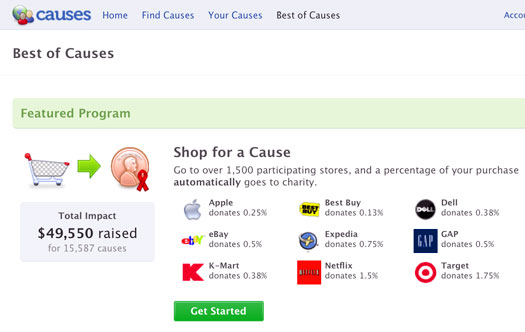
Is your organization leveraging the power of the crowd?
Last month I presented at the UK’s National Council for Voluntary Organisations’ Foresight seminar: Changing ICT – what does it mean for your charity, with a focus on the future of online revenue generation for nonprofit organizations.
What’s most interesting to me within the nonprofits-in-social-space is the difference between organization-driven and individual-driven fundraising (and other promotion) campaigns. Social media is a space where the individual reigns, relationships are required, and conversations are public. That’s not exactly the way business normally goes down offline. And it has real impact on the way organizations raise funds.
Online, the process and attributes that succeed are traits you’d normally associate with an individual: authenticity, relationships, conversations, etc. Organizations should recognize the need for being “real” online and can honor that by, for example, putting in the profile information of the organization’s representatives who are actually speaking from that account, sharing information, resources and links that aren’t only associated with the organization, and responding to people online to have conversations in public (even put a smiley face in there while you’re at it!).
When it comes to fundraising and the options available to individuals to campaign on your behalf online, think of the differences this way:
Offline: You would never have someone who has never met any staff of the organization, or even know where the organization is located, become so excited about the work it’s doing that he or she creates an annual campaign to raise funds on the organizations behalf and then goes through with it each year.
Online: That is already happening with people who use applications like Causes in Facebook (above), which encourages users to fundraise each year on their birthday via their Birthday Cause tool (individuals select an organization, ask their Facebook friends to give donations instead of presents, and the funds get distributed to the organization).
 Offline: You would probably not have someone who’s had no physical connection with your organization be so excited about your work that they design and produce their own fliers about your work and then canvass their local community to raise awareness or your programs.
Offline: You would probably not have someone who’s had no physical connection with your organization be so excited about your work that they design and produce their own fliers about your work and then canvass their local community to raise awareness or your programs.
Online: That’s exactly what people are doing when they become a fan of your organization on facebook (adding your icon to their profile), add your twibon to their Twitter avatar (a little logo that is placed over the user’s picture), or even when sharing links or messages about your organization (even ones that you didn’t create) with their social networks.
So, how do you respond?
Like I said at the beginning, it’s important for organizations to move into the social media space using the processes that are accepted and successful, with the focus on being transparent and real, and so on. Some key questions to ask yourself include:
- If people are supporting you by directly connecting with you on different social media platforms, what are you doing to encourage them to connect with you in a space where you have access to the data? (You can’t access your friends on facebook if the platform is down for maintenance, let alone if it goes down permanently!)
- If people are fundraising for you online, do you know about it? (Start looking for it!)
- If people are fundraising for you online, are you saying thank you to the fundraisers and to the donors?
- If people are giving to you online on different social media platforms, are you encouraging them to connect with you directly so you can encourage them to give again later?
- How are you showing your gratitude for the hard work of your supporters (“volunteer” means something very different online!) online?
What do you think?
In this very different space for organizations, how has your organization adapted to the online culture and opportunities? Do you have any tips or examples from your social media presences or campaigns to share?
You can review the slides from my whole presentation, as well as all of the speaker notes, on my blog.
—-
This is a guest post at the Stanford Social Innovation Review. Visit the SSIR blog to comment, or leave your thoughts below!
Cross-posted from Amy Sample Ward’s blog.



![Reblog this post [with Zemanta]](https://img.zemanta.com/reblog_e.png?x-id=a66f1e77-8649-4292-81f3-cac76bd4c4ce)






That i don,t know but your article seems good i liked it.
I am not gaining that much traffic for my website. Well I hope you tips will definitely help me.